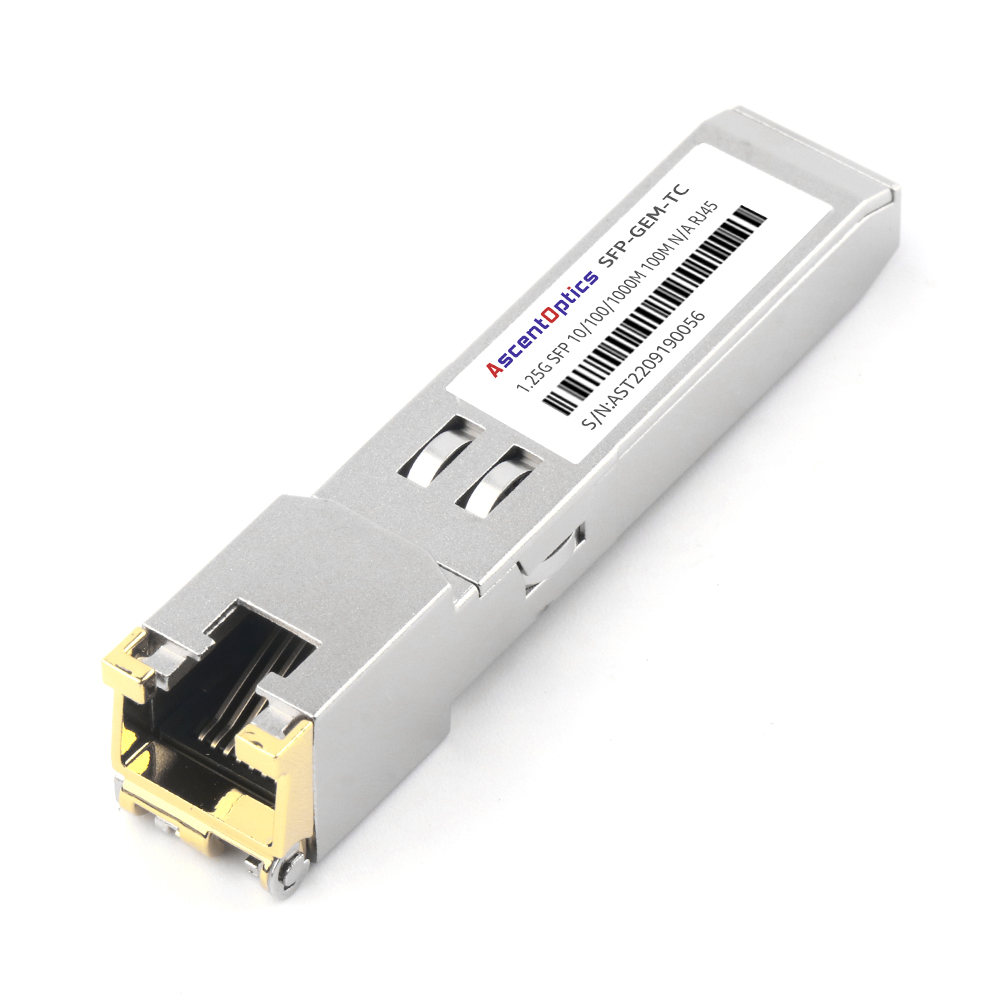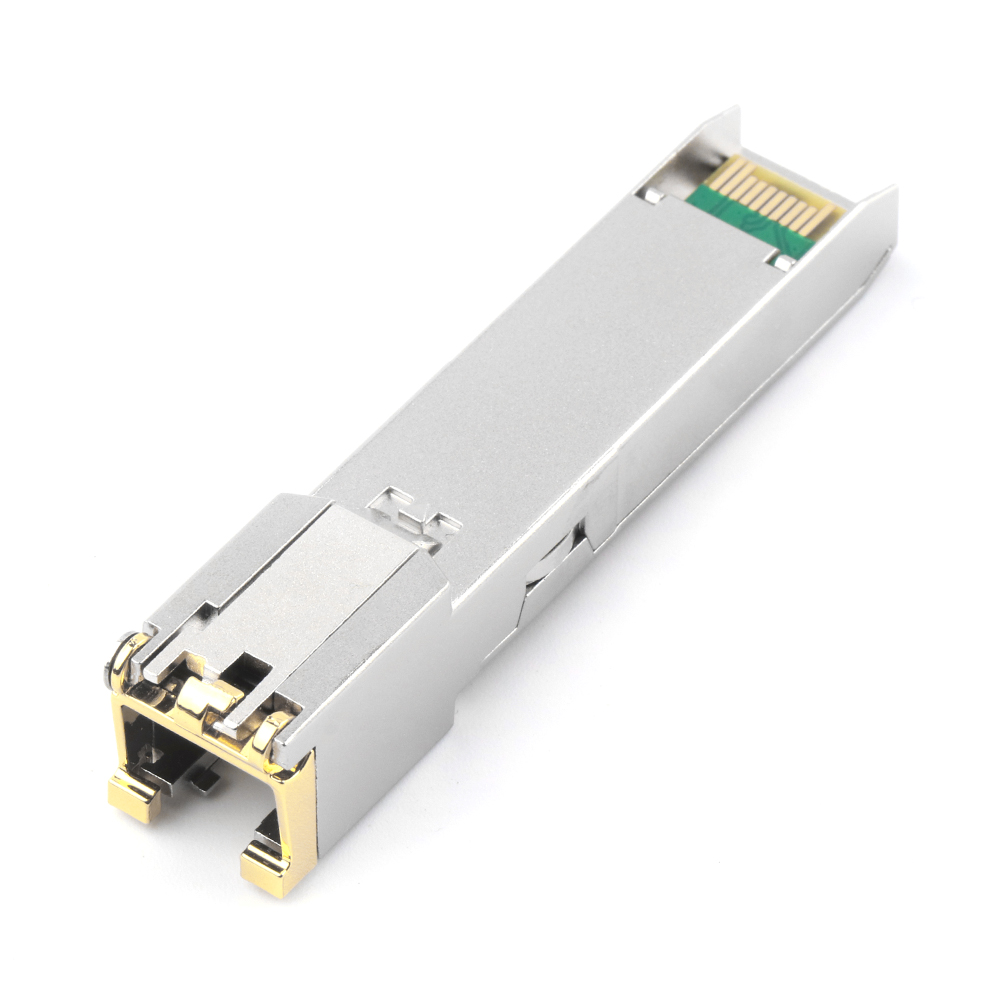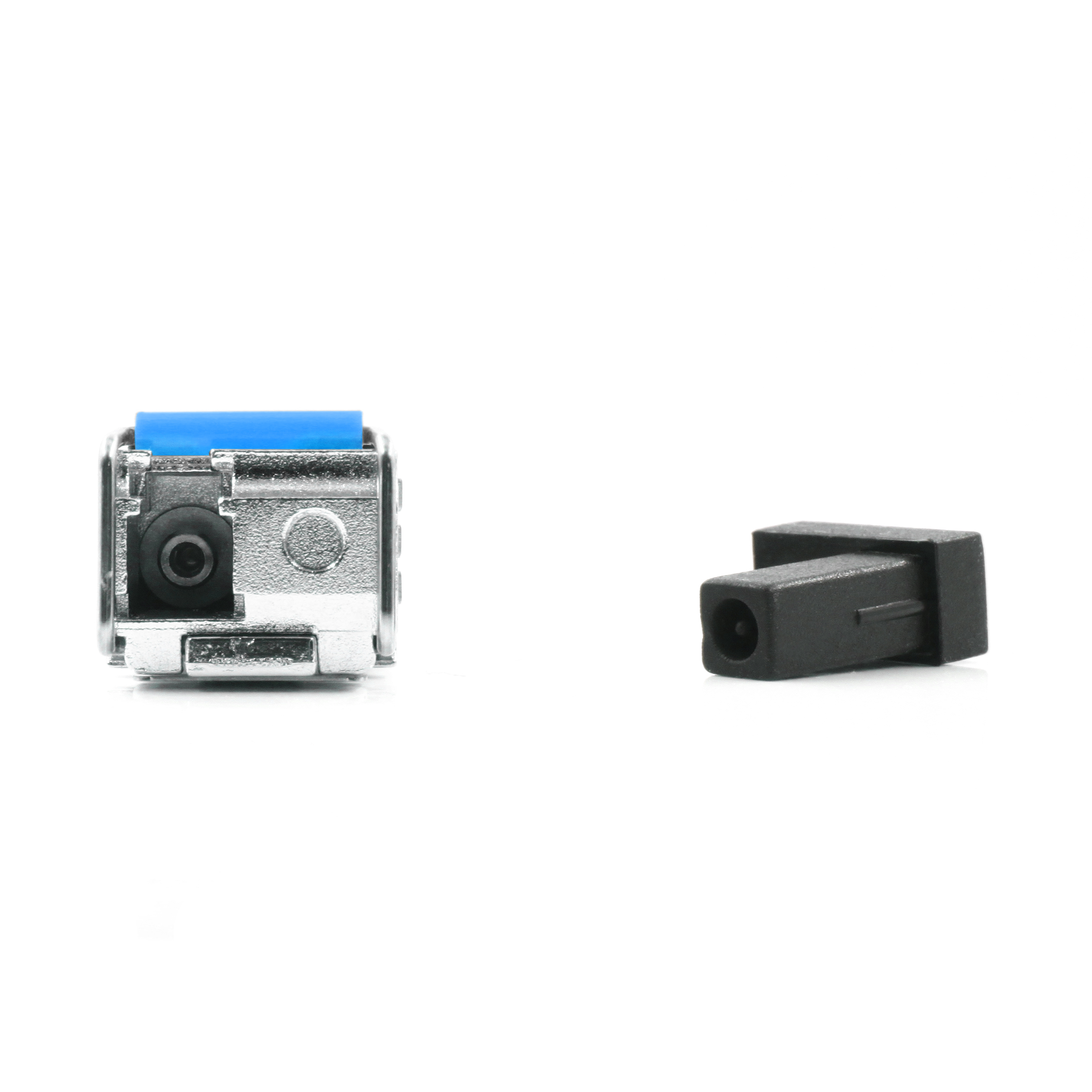During this time, when swift communication is necessary for business transactions, it is important to know what creates a strong network infrastructure. This manual discusses Small Form-factor Pluggable (SFP) optical transceivers used in modern networks to ensure effective and safe transmission of information. SFP transceivers are small devices that can be swapped while the system is still running; they are inserted into NICs or switches and used to transmit data via fiber optic or copper cables. This write-up offers a detailed description of SFP optical transceivers, including their types, how they work, and benefits, as well as considerations when choosing one’s suitable type, among others. Through reading this article, people will learn more about SFPs and how these components can help improve speed and scalability within different network setups at the close thereof.

Compact Form-factor Pluggable (SFP) optical transceivers are important devices used in network hardware for transmitting data over fiber optic and copper cables. They are modular connectors that plug into SFP ports on switches and network interface cards (NICs). These modules convert electrical signals into light signals, which can then be transmitted over the optical fiber or vice versa. Different types of SFP transceivers support different data rates, such as 1 Gbps and 10 Gbps, among others, and distances; therefore, they are versatile for various networking needs. Furthermore, being hot-swappable means they can be changed without affecting the running of a network; hence, easy upgrades can be made where necessary while still in operation. This makes them adaptable and crucial components for scaling high-speed infrastructures of communication networks.
To facilitate high-speed data transmission over long distances with little signal loss, optical modules are necessary in modern networking. These convert electrical signals from network devices into optical ones that can be transmitted through fiber optic cables so as to link different ends for effective and reliable communication between them. Various network standards and data rates are supported by optical modules, thus ensuring compatibility across different network environments that may need to scale up or down accordingly. They are also able to handle large amounts of data traffic, which cannot be avoided in enterprise networks, data centers, and telecom infrastructure, where performance and uptime are crucial. As a result of being modular in nature, optical modules provide flexibility, hence allowing networks to grow with changing technological needs through seamless upgrades as well as maintenance.
SFP transceivers are very important in modern networks because of the following features:
In conclusion, without SFP, transceiver efficiency cannot be achieved within scalable network systems that perform at higher levels.

What distinguishes SFP and SFP+ modules from each other are their data rate capabilities and the applications that they have been designed to handle. For instance, whereas SFP (Small Form-factor Pluggable) modules can generally support up to 4.25 Gbps of data rates which makes them suitable for normal networking tasks like 1 Gbps Ethernet, Fiber Channel, or SONET/SDH, SFP+ (Enhanced Small Form-factor Pluggable) modules are intended for higher data rates of up to 10 Gbps hence becoming more ideal for more demanding applications such as 10 Gigabit Ethernet and high-speed data center environments.
Furthermore, there is a difference in signal processing efficiency between standard SFPs and their enhanced versions with lower latencies i.e., when it comes to maintaining an optimum network performance. In terms of physical attributes, though, both types share the same size factor, making possible integration into existing networks, thereby saving on costs for new installations. Nonetheless, one should remember that these ports are not interchangeable: while you can insert an sfp module into an sfp+ port inserting an sfp+ module into an sfp port would not work due to different supported data rates.
In summary, it is true that any modern network cannot do without both kinds of these components however what kind will be used mostly depends on required speeds as well as expected performances within a given environment.
SFP modules and SFP+ modules are very versatile and can be used with many network devices that support different data rates. Hardware, as well as firmware, need to support these modules for them to be compatible with network devices. It is common for switches, routers, and firewalls manufactured by Cisco, Juniper, or Dell, among others, to indicate the types of modules they can use.
SFPs work with a broad range of devices supporting data rates up to 1 Gbps. These can often be plugged into SFP+ ports due to their backward compatibility feature therefore allowing flexible scaling of networks as needs change within an organization. Nevertheless, it is important to verify module compatibility from the device’s datasheet or manufacturer’s guidelines for best performance and avoidance of any likely incompatibilities.
On the other hand, SFP+ requires higher speed supported devices usually limited by 10Gbps, commonly found in data centers and high-performance computing environments where more throughput with lower latency is demanded. Some network equipment might need specific firmware updates so that full functionality with SFP+s can be achieved, thereby ensuring efficient operation across the network infrastructure.
In conclusion while sfp along side sfp+.modules enable easy scaling of networks; it is important to take note of what kind of support those specifications have in terms of seamless integration into various networking equipment, which leads to better performance.
SFP and SFP+ transceivers are versatile and high-performance, so they can be used in a wide range of network environments.
These scenarios allow organizations’ networks to become scalable and high-performance through the use of SFP as well as SFP+ transceivers.

Perle SFP transceivers have a variety of features that distinguish them as reliable options for high-performance networking. Some of these include:
By opting for Perle SFP transceivers enterprises can enjoy wide compatibility, strong performance as well as flexibility required to meet diverse network needs.
Perle SFP optical transceivers are created for delivering higher performance and reliability under modern network needs. The components used in these transceivers are of high quality that guarantee stable and reliable transmission of data, which is essential for any network to function optimally. With industrial grade models supporting an extended temperature range from -40°C to 85°C, they can be used in harsh environments such as outdoors or industrial areas. Multimode fiber support is available with single-mode options also provided for different distance requirements i.e., short reach or long reach situations. Many models have Digital Diagnostics Monitoring (DDM) which allows real time monitoring of critical parameters like temperature, voltage, optical output power etc., thereby enabling proactive management of networks while enhancing overall reliability too.Additionally, Perle SFP transceivers are easy to install as well as being hot swappable hence simplifying maintenance procedures during network upgrade stages thereby making them more dependable still.By integrating these features together Perle ensures that there is wide compatibility among organizations alongside strong Network Performance.
Perle provides lots of networking products which are made to suit the diverse requirements of modern network infrastructures. Their range includes:
These segments show that Perle is committed to offering highly efficient reliable flexible networking solutions. Each product category takes into account different types of network environments thus guaranteeing seamless integration robustness as well as performance throughout the system.

Fiber optic networks require the use of duplex LC (Lucent Connector) and BiDi (Bidirectional) SFP (Small Form-factor Pluggable) modules in order to optimize data transmission through different functionalities. Duplex LC SFPs employ two fibers for sending and receiving information, therefore, allowing for more bandwidth at longer distances. These types of devices are typically used in settings necessitating fast and reliable connections like data centers or enterprise networks.
BiDi SFPs, on the other hand, make use of Wavelength Division Multiplexing (WDM) technology, which enables data transmission over one cable instead of two cables like with standard systems, reducing costs associated with additional fiber cables. The modules work great where there is limited availability in terms of fibers or space during installation since they occupy less room compared to their counterparts. It should also be noted that both are hot-swappable and can be used interchangeably among various networking devices, thereby providing flexibility when it comes to designing networks that can grow with time.
To conclude, while duplex LC SFPs are best suited for heavy-duty applications where reliability matters most, such as large-scale enterprises, BiDi SFPs provide cost-effective measures towards achieving efficient communication over optic fiber links, especially when there is a need to save on space or minimize expenses related to additional cables.
Multimode and Singlemode SFP transceivers are vital parts of fiber optic networks that help in communication but each type is designed to meet certain demands based on distance or bandwidth.
Multimode SFP transceivers are used with multimode fiber which has a larger core diameter of about 50 micrometers or 62.5 micrometers. Large core size allows light to travel in many different modes, hence these transceivers are ideal for short-range data transmission up to 550 meters typically. Multimode transceivers offer the best cost-effectiveness over short distances where they can be found in local area networks (LANs), data centers among other campus environments due to their good performance within these areas.
On the other hand, single-mode SFP transceivers work with single-mode fiber that features a small core diameter of approximately nine micrometers. The small core allows for greater precision when transmitting signals over long distances, such as 10 km and above, without much signal loss along the way. These types of devices find applications in long-haul telecoms systems; metro-area networks (MANs) among others which need wider coverage combined with high-speed data integrity.
In conclusion, whether one chooses Multimode or Singlemode SFP transceiver depends mostly on what is required by their network infrastructure interms of distance and budgetary allocations. For instance while multimodes may save costs when used over shorter links, singlemodes will always provide better signal quality where there might be higher attenuation over longer routes.
SFP transceivers work on different frequencies which directly affect the distance a signal can travel and its integrity. For multimode SFP transceivers, the most widely used frequencies are 850nm, enabling connection up to 550meters over OM2 or OM3 fiber. These are appropriate for use in LANs and data centers where distances are short.
On the other hand, single-mode SFP transceivers operate at either 1310nm or 1550nm. Normally, 1310nm devices can reach up to 10 kilometers though some types may cover as much as 40 km when installed with specific fibers. Meanwhile, the second type is designed for even longer links, often exceeding 40 kilometers and going up to over 80km, with low signal attenuation, making it suitable for MANs and long-haul telecommunication systems.
In conclusion it is important to choose the right wavelength and fiber type for any given network application whether this be within a short range data center or across vast distances within metropolitan areas for optimal performance of the link.

When buying an SFP transceiver, you should always consider its compatibility with network devices and brands. SFPs will only work if they are compatible with specific models or makes of network switches, routers, or any other hardware. Some major makers of networking equipment like Cisco, Juniper or HP may have strict requirements for compatibility where they would not recognize a module unless it adheres to their own coding standards. Furthermore, some sellers publish lists indicating which types of transceivers can be used on their devices; this is called a compatibility matrix.
Therefore, it is necessary to ensure that any chosen SFP transceiver operates without any problems within the existing infrastructure of your network. Always read through documentation from manufacturers or visit their websites in order to find out more about what could work and what won’t before making such purchases. Firmware updating should also not be ignored because it helps enhance reliability as well as performance across networks while considering third-party modules that guarantee interoperability too.
Considering the data rate and distance requirements of your network is very important when choosing an SFP transceiver. The speed at which the transceiver can send data is determined by the data rates, which are usually measured in gigabits per second (Gbps). The most common SFP transceivers support various data rates including 1 Gbps (SFP), 10 Gbps (SFP+), 25 Gbps and even 100 Gbps. It’s, therefore, important to ensure that it has enough capacity for your application to run optimally.
Moreover, the fiber optic cable type used and specifications of a transceiver determine what distance an SFP transceiver can cover. For instance, single-mode SFPs are designed for long-distance transmissions often exceeding 10km while multi-mode ones could only reach up to around 550 meters at some data rates. Therefore, one should choose correctly according to these factors so as not only to save on costs but also to guarantee reliability throughout their network.
In summary; you must evaluate the required data rate vis-à-vis distances within your setup while picking out an appropriate SFP module lest things won’t work out well with such components involved! Make sure there’s seamless integration plus performance across all corners of that architecture where necessary.
Not only is it necessary for traditional IT networks, but SFP transceivers are also critical in different environmental and industrial applications. Robust and resilient hardware is often required in these kinds of places to work under extreme conditions such as very high or low temperatures and humidity levels, among other factors like exposure to contaminants. Industrial-grade SFP transceivers have been designed specifically for this purpose; they offer better durability as well as performance reliability.
In the environmental sector, SFP transceivers can be used to monitor water treatment plants’ activities, control smart grids systems and enable real-time data collection from renewable energy sources i.e., wind farms or solar power stations among others. They ensure that crucial information is transmitted without fail so that operations are smooth and responses made promptly when there is any change in the system.
Manufacturing plants and transportation systems, including oil refineries all over the world, need strong communication networks, which can only be achieved through deploying SFP transceivers designed for industrial use. Most of these areas experience high EMI levels hence requiring stable connections from their relevant devices no matter what. When one chooses appropriate industrial-grade SFP transceivers, then businesses will realize seamless integration even under the most difficult conditions while still maintaining high-performance standards.
The Ultimate Guide to SFP Optical Transceivers
Ultimate Guide to SFP Transceiver Modules
Everything You Need to Know About SFPs
A: A Small Form-factor Pluggable (SFP) optical transceiver refers to a small device that can be easily plugged in and out of a network for both data transmission and reception by means of fiber optic cables. They are used in connecting switches, routers, and other networking devices.
A: Different types of SFP optical transceivers include 10G SFP, duplex LC MMF optical transceiver modules, duplex LC SMF optical transceiver modules, 1000BASE-SX, 10GBASE-SR, 10GBASE-LR, among others, which are designed for specific applications and distances.
A: In most cases, MMF (multimode fiber) transceivers operate at 850nm wavelength and used for short distance of up to 550 meters. However, singlemode fibers (SMFs) have longer transmission distance which can go up to around 80 km with different wavelengths like 1310nm or 1550nm.
A: Many vendors follow MSA standard(Multi-Source Agreement). This means they comply with this agreement hence their equipment can work together. Some examples include Cisco, Arista, Intel or Juniper while others like FS.com offer compatible optics widely.
A: According to IEEE standards, the term “10GBASE-SR” stands for “IEEE Std802.3ae-2002”. It specifies an implementation on multimode Fiber Link to support link lengths up to at least 300 meters on OM3 fibers. Brand compatibility depends on different suppliers, so 10GBASE-SR SFPs are provided by many manufacturers.
A: A lot of the latest SFP transceivers have Digital Optical Monitoring (DOM) capability that allows operators to check real-time parameters such as optical power, temperature and voltage. This information can be accessed through the network device’s interface or browser.
A: CWDM SFP transceivers are used to transmit multiple signals at different wavelengths over a single fiber channel. This helps increase bandwidth capacity without having to lay extra fiber.
A: The LC (Lucent Connector) is the most common connector for use with both MMF and SMF in SFP transceivers. However, duplex LC connectors are deployed frequently in support of full-duplex communication.
A: Yes, there’re copper cabling-supported SFP transceivers typically for short-range Ethernet interfaces like 100m connections. These feature RJ45 connectors instead of fiber connectors.
A: The standard called out by “SFF-8472” specifies diagnostic features for small form factor pluggable modules ensuring they comply with certain requirements including digital optical monitoring (DOM). Interoperability and reliable performance between different devices as well as manufacturers’ products are guaranteed when one meets this criterion.